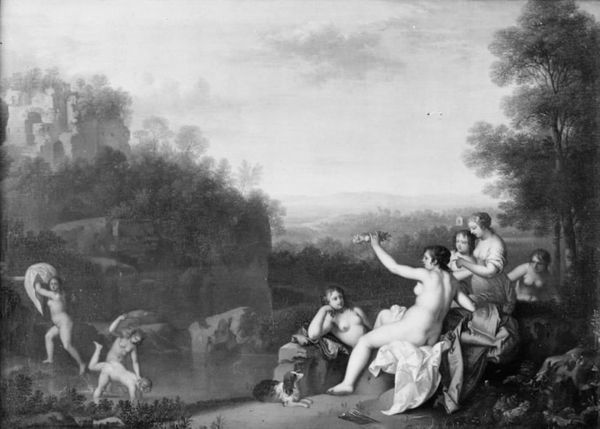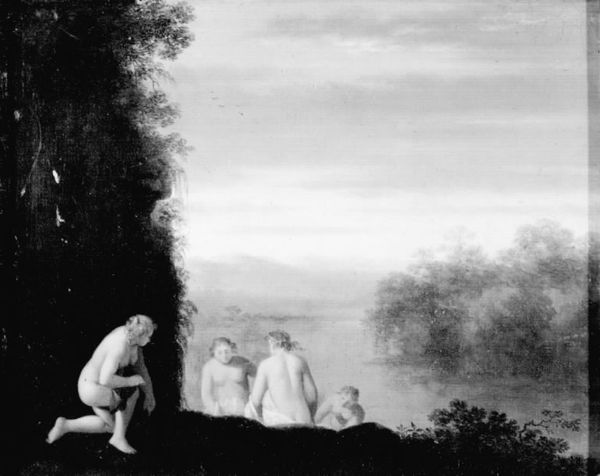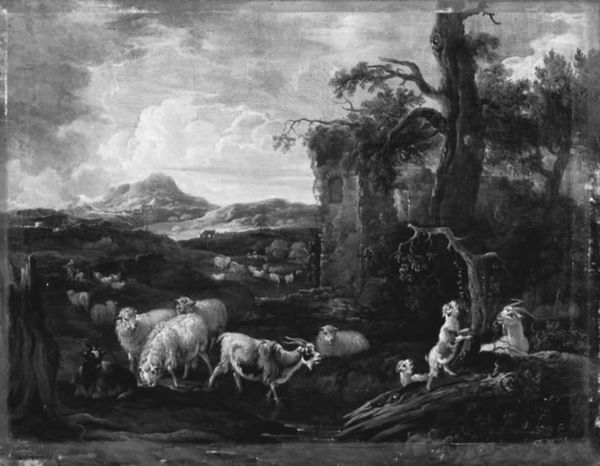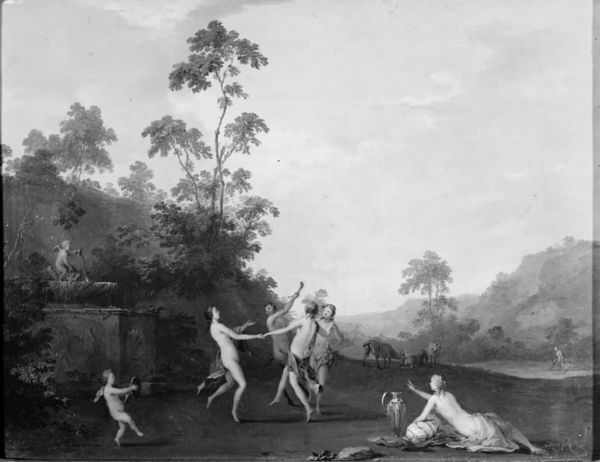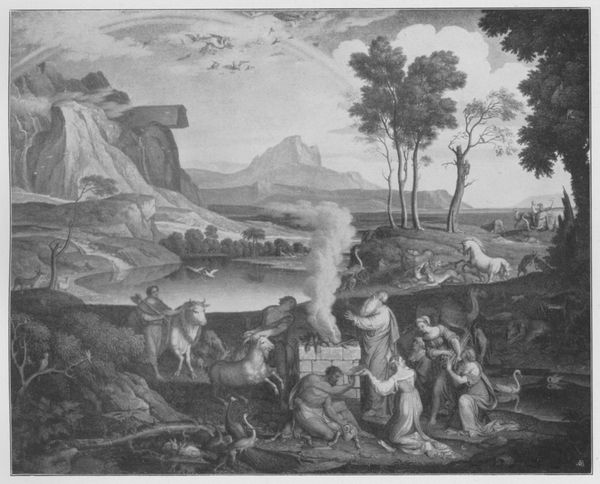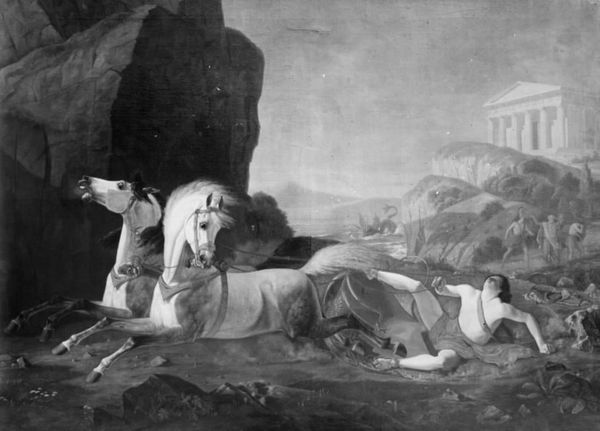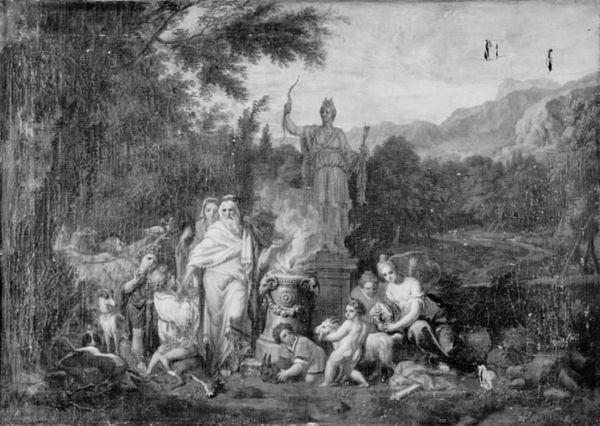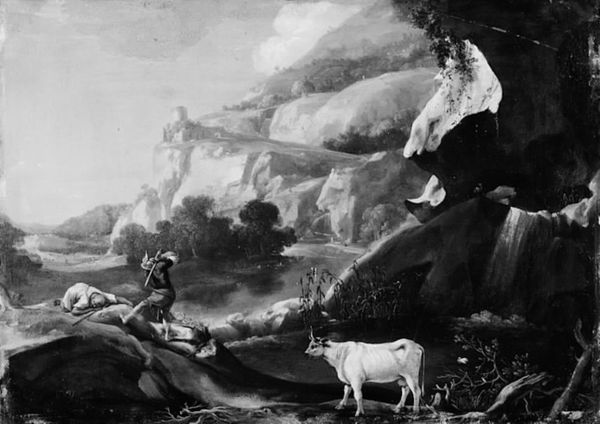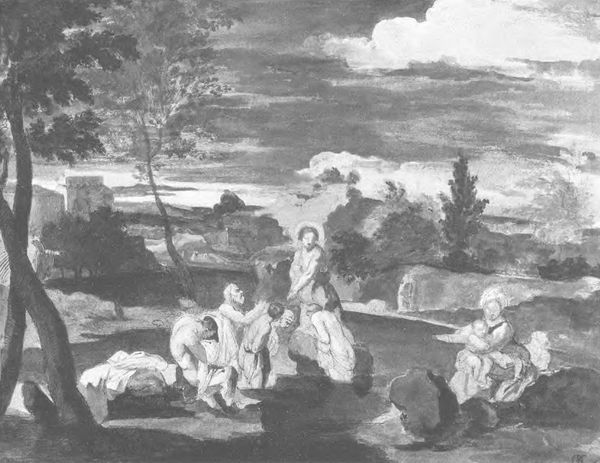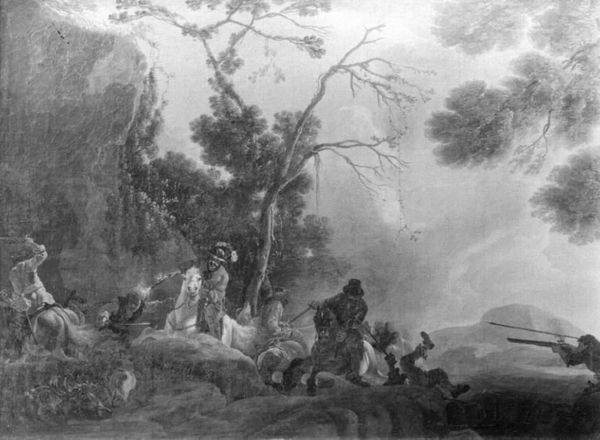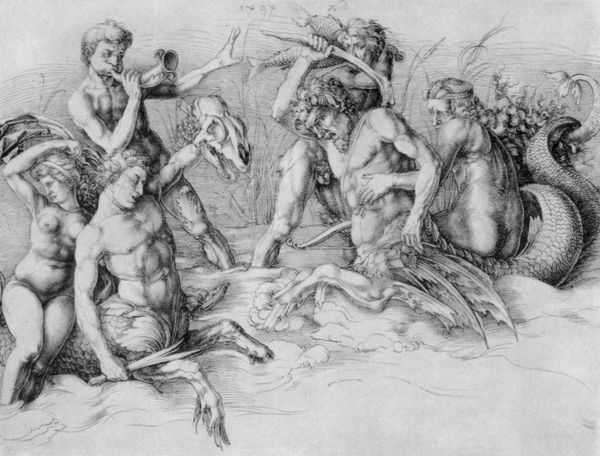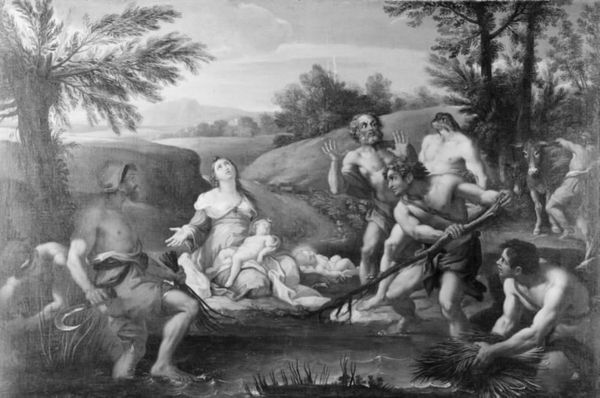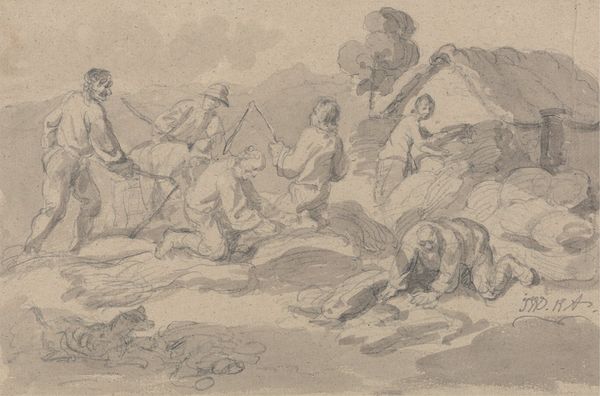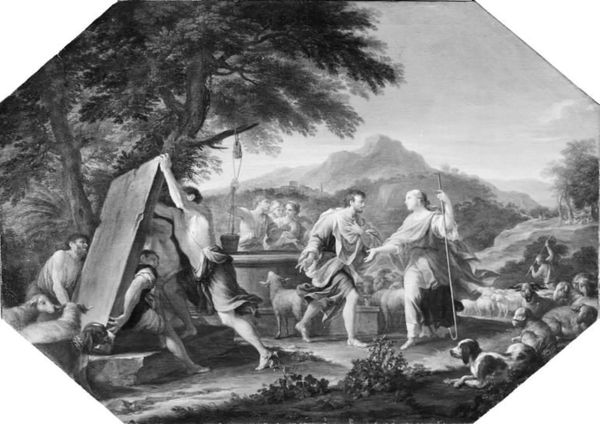
painting, sculpture
#
baroque
#
painting
#
landscape
#
monochrome colours
#
sculpture
#
black and white
#
monochrome photography
#
monochrome
#
nude
#
monochrome
Dimensions: 13 5/8 × 17 in. (34.7 × 43.2 cm)
Copyright: Public Domain
Editor: Here we have Dirck van der Lisse's "Nymphs Bathing," painted sometime between 1640 and 1660. The monochrome palette gives the scene a sort of ethereal, timeless quality. What's your read on this classical scene? Curator: I see a loaded image deeply embedded in power dynamics. While seemingly a harmless depiction of female bodies in nature, we must question the male gaze inherent in such representations, even then. Consider the historical context: were women able to freely depict themselves in this era? Who was this artwork created for, and what message was it meant to convey to them? Editor: That's a good point. I hadn't really considered the implications of who the intended audience might have been and the inherent male gaze during its time. So, this is less about innocent pleasure and more about societal structures? Curator: Precisely. The idealized bodies also serve to uphold particular standards of beauty. Are these images truly celebrating the female form, or reinforcing unattainable expectations? How might feminist theory interpret this today? The act of observing these nymphs can be seen as an assertion of control. Editor: So by acknowledging the male gaze and these social dynamics, we’re pushing beyond a simple appreciation of artistic technique? Curator: Absolutely. The painting prompts a broader reflection on power, gender, and representation. By unpacking these layers, we gain a more critical, nuanced understanding of art's role in shaping cultural narratives. It challenges us to be active viewers, questioning rather than passively consuming. Editor: This has totally reshaped my initial viewing of the painting! Now I see how much historical context can shift an understanding of art. Curator: And how relevant art history remains to contemporary discussions about gender, identity, and power.
Comments
No comments
Be the first to comment and join the conversation on the ultimate creative platform.
